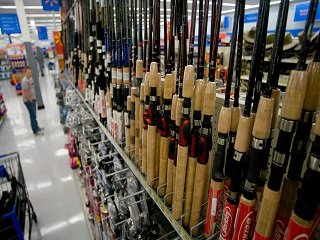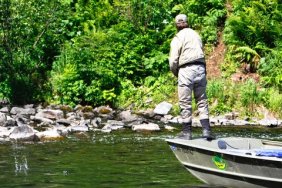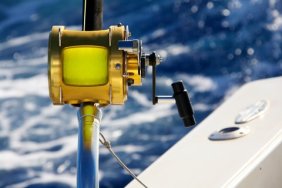 There are some realities of fishing that can be a little difficult for the average angler to cope with. The high cost of quality gear is definitely one, but the fact that there are certain pieces of tackle designed to perform best with specific techniques or lures is another. Rods are an example of this principle. While you can do a lot with one or two rods of common length and action, I can tell you that throwing a crankbait with a rod with specifications that maximize the performance of the bait will make a noticeable difference. Here are a few examples of what to look for when matching a rod to specific lures.
There are some realities of fishing that can be a little difficult for the average angler to cope with. The high cost of quality gear is definitely one, but the fact that there are certain pieces of tackle designed to perform best with specific techniques or lures is another. Rods are an example of this principle. While you can do a lot with one or two rods of common length and action, I can tell you that throwing a crankbait with a rod with specifications that maximize the performance of the bait will make a noticeable difference. Here are a few examples of what to look for when matching a rod to specific lures.
For baits that have treble hooks, such as crankbaits or jerkbaits, there is little need for a big hook set, as the hooks tend to do the job for you. Furthermore, since these baits are often used in open water situations, you don’t need to worry about accuracy as much as you do about finding a rod with a soft tip that allows you to feel soft bites and strikes. For this reason, many anglers tend to prefer slow, limp, longer rods. A 7' rod with a very flexible tip is normal here. The long, soft rods let you play the fish with ease since the rod does most of the work for you.
For smaller, lighter plastics, such as soft jerkbaits, the single hook and lighter lure call for a different steup. A long rod is useful for casting the light bait without a weight; most fishermen prefer a 6 ½ – 7' rod here. One with a medium tip will cast the lure well while still having the power for a solid hookset. I tend to look for a very fast action on my soft jerkbait rod that will do well at working the fish out from around heavy cover, when plenty of backbone is a must.
When you’re using tubes or small worms with small weights—go-to’s for fishing overhanging trees and docks—you might need to skip the lure under the overhang for a few extra vital feet, which means accuracy is crucial. Here, a 5 ½ – 6’ spinning rod with a medium to moderate tip works wonders.
As your rod collection grows, most serious fishermen end up with a wide variety of rods in their boat. Typically, each one is matched to the bait with which it works the best, so my hope is that this series helps you figure out the best combinations for your tactics. Be sure to take the tips outlined above to heart and also to come back for Part Two!








